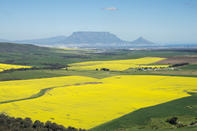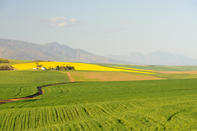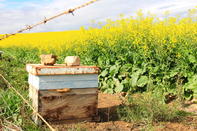Canola pods are primarily used to make canola oil or blended with other edible oils. This oil has been approved by the Heart Foundation, because of its high percentage of omega-3 fatty acids that decreases low-density lipoprotein cholesterol levels.

Canola meal and oil cake, which are by-products of oil processing, are good sources of animal protein with canola grain containing 36% to 46% oil and 20% to 24% protein and the canola oilcake containing about 35% protein. In other countries, canola is also used to produce biofuel and as organic fertiliser.
Crop Rotation Benefits

Canola is an excellent rotation crop, with some producers reporting a 10% to 50% increase in follow up wheat yields. Why? Canola has a biofumigation effect that helps to combat certain wheat diseases, such as take-all, white ear, root knot nematodes and Phytophera.
It allows farmers to use grass herbicides and in effect allow them to clear the land of troublesome grass weeds before planting wheat again. Besides this, its deep strong taproot also helps to loosen the soil.
Climatic Requirements

Canola is produced in cool weather. The Department of Agriculture, Forestry and Fisheries’ Canola Production Guideline identifies 21 degrees Celsius as optimal for growth and soil temperatures of 15 to 20 degrees Celsius as best for germination.
Temperatures higher than 30 degrees Celsius may be detrimental to pollination and will shorten the pod and seed development phase to such an extent that yield and quality become impaired. For dryland production, the region should have access to at least 300 mm of rain between April and October. Canola is most sensitive to drought during the flowering and grain filling stage.
Soil Requirements

In South Africa canola can be planted in a wide range of soil types, but thrives in clay-loam soils that are well drained and not susceptible to wind erosion. The soils should preferably also be deep, since canola’s taproot system can reach lengths of 100 cm deep. The ideal soil pH is between 5.5 and 7 KCl.